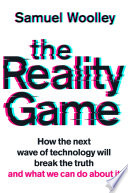

The book delves into the concept of reality, asserting that our perceptions shape our understanding of the world around us. The author discusses how technology influences our perceptions and creates alternate realities, particularly through social media and virtual environments. This idea emphasizes the importance of being aware of how our realities are constructed and the implications this has for personal and societal decision-making. The exploration of augmented reality (AR) and virtual reality (VR) is central to this discussion, highlighting how these technologies can blur the lines between what is real and what is fabricated.
Continue readingThe book discusses the pervasive role of technology in shaping our perceptions of reality. It examines how algorithms and data-driven systems curate our experiences, often leading to echo chambers and confirmation biases. The author argues that while technology can enhance our understanding of the world, it can also distort it by providing a skewed view based on our interactions and preferences. This idea is particularly relevant in the context of social media, where the curated feeds can limit exposure to diverse viewpoints, thereby impacting our understanding of reality.
Continue readingGamification is a significant theme in 'The Reality Game.' The author explores how game mechanics are increasingly used in various sectors, from education to marketing, to engage users and influence behavior. This idea highlights the psychological aspects of gamification, including motivation and reward systems, and how they can be harnessed to create more compelling experiences. The book also discusses the ethical considerations of using gamification, particularly concerning manipulation and the potential for addiction.
Continue readingA critical examination of the ethical implications of manipulating reality through technology is a central theme in the book. The author raises questions about the responsibility of tech companies in shaping user experiences and the potential consequences of creating alternate realities. This idea emphasizes the need for ethical guidelines and frameworks to govern the use of technology, particularly as it relates to privacy, consent, and the potential for misinformation. The discussion extends to the societal implications of these ethical considerations, urging readers to think critically about the technologies they engage with.
Continue readingThe book posits that technology is fundamentally changing the way humans interact with each other and with the world. The author discusses the shift towards virtual interactions and the implications this has for relationships, community, and identity. This idea explores the potential for technology to enhance connections, but also warns of the risks of isolation and disconnection that can arise from over-reliance on digital communication. The future of human interaction is framed as a balancing act between leveraging technology for connection and maintaining authentic relationships.
Continue readingStorytelling remains a powerful tool for communication and connection, and the book highlights how digital platforms have transformed this art. The author discusses the importance of narrative in shaping perceptions and experiences, particularly in the context of marketing and content creation. This idea emphasizes the need for authenticity and relatability in storytelling, as audiences become more discerning about the content they consume. The exploration of storytelling in the digital age also touches on the role of influencers and the impact of viral content on shaping societal narratives.
Continue readingThe final key idea in the book is about equipping readers with strategies to navigate the complexities of modern reality shaped by technology. The author provides practical advice on critical thinking, media literacy, and self-awareness to help individuals discern between different realities and make informed decisions. This idea underscores the importance of being proactive in engaging with technology and understanding its implications on personal and societal levels. The book ultimately serves as a guide for readers to take control of their experiences in a world increasingly defined by digital realities.
Continue reading